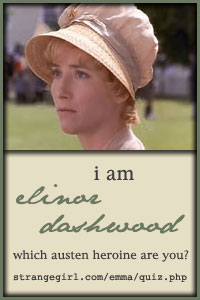Converting sock patterns that are written for knitting in a different method than the method you prefer is easy. Use markers to indicate the parts of the sock.
I use markers on all of my sock knitting projects. That way I can use a pattern written for two circular needles, four double points, 5 double points or one circular needle using any method I prefer. For top down patterns: cast on, join in a circle and place the marker at the join when you come to it the next time around. Knit in a tube, slipping the marker every round, until your ankle is long enough and you are ready to start the heel. If you are using four double pointed needles, you can knit a few stitches onto the next needle on every round and avoid ladders, as long as you keep the marker in the same place every round. No worries about needle one, needle two, etc. The number of stitches on each needle doesn't need to remain constant, just relatively consistent and even with the stitches on the other needles. I do try to make sure each needle begins with a knit stitch, not a yarn over or a purl stitch.
When ready to start the heel flap, remove the marker, knit half the stitches onto one needle. Leave the other half of the sock stitches waiting on a second needle or length of string, out of the way. Purl back halfway to where you started the heel and removed the marker, and continue to knit and purl back and forth this way until the heel flap is as long as the pattern says to make it. Knit to the end of the needle, pick up as many stitches from the heel flap as you need to to make the side look good, until you come to the stitches waiting on the other double pointed needle. Place a marker HERE, knit across the instep stitches, which are half of the original number of cast on stitches, place another marker (I use green for the first marker and red for the second marker.) Pick up the same number of stitches on the second side of the heel flap as you did on the first side. You will need to keep adding needles as you pick up stitches and knit them, until you are back up to three or four. Knit all the way around one round, then, three stitches BEFORE the first marker, K2TOG for your first decrease. K1, slip the marker, knit across the instep stitches (in pattern if you are using a stitch pattern here), slip the second maker, K1, SSK (the opposite leaning decrease of a K2TOG so the gusset looks symmetrical), knit around until you reach the first marker, slip it, knit the instep stitches in pattern, knit around to the first marker, slip the marker, Repeat the decrease round every other round until you have decreased the gusset stitches away and the number of stitches on your needles is the same as you cast on (or another number a little smaller or bigger if that is what you need to make the sock fit YOUR foot.)
NOW you are into smooth sailing, knitting around and around, slipping the markers every round, until you have knit your sock as long as you need, 2 -2 1/2" from the end of the sock. It is now time to begin the toe decreases, which occur on each side of EACH marker. This is what I do to end most of my socks. For a Wedge toe: Round 1: Knit to last 3 sts before first marker, k2 tog, k1, slip marker, K1, SSK, knit to last 3 sts before second marker, K2 TOG, K1, slip marker, K1, SSK. Round 2: Knit around in stockinette stitch. Repeat these two rounds until 16 (18) sts rem. Divide the 16 (18) sts between 2 needles at markers and Kitchener stitch (graft) them tog or do a 3-needle bind off. Now knit the second sock!
I find if I use this formula I can knit any sock pattern I want, even if how it is written is confusing to me. I also want to recommend to beginners that they follow the pattern as written even if the directions sound strange. The sock will come out looking like a sock, no matter how strange it looks in the process or how weird the directions sound. Trust the pattern writer, they usually know what they are doing.




















 Knitters Without Borders Challenge
Knitters Without Borders Challenge


 Knit
Knit


























No comments:
Post a Comment